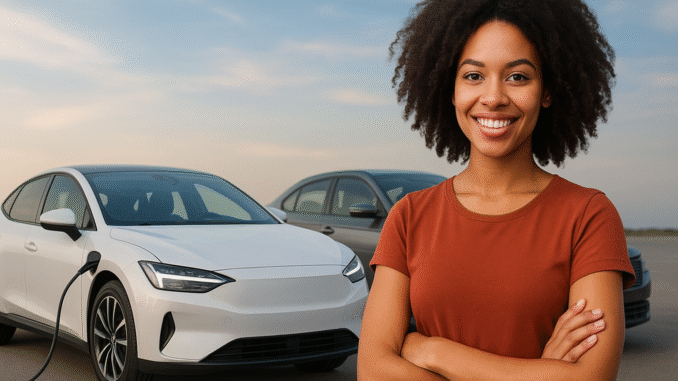
Future of Driving: Top Automotive Innovations to Watch in 2025
The automotive industry has always been a hub of innovation. From the invention of the first gasoline-powered vehicles to the rise of electric cars, each decade brings fresh changes that reshape how we move from one place to another. In 2025, the future of driving looks brighter and smarter than ever before. New technologies are transforming vehicles into intelligent machines, prioritizing sustainability, safety, and seamless connectivity.
Whether you are a car enthusiast, a daily commuter, or a curious observer, understanding these innovations can help you see how transportation is evolving. Let’s explore the top automotive innovations to watch in 2025.
1. Electric Vehicles (EVs) Take the Lead
Electric vehicles are no longer niche products—they’re becoming mainstream. In 2025, automakers are expected to release a broader range of EV models, from affordable compact cars to luxury SUVs. With governments around the world pushing for greener energy, the shift from gasoline to electric power is accelerating.
- Longer Ranges: New battery technology promises driving ranges of 400–600 miles on a single charge.
- Faster Charging: Ultra-fast charging stations can now recharge a battery to 80% in under 20 minutes.
- Affordable Options: Companies are rolling out budget-friendly EVs to make electric driving accessible to more people.
The combination of affordability and convenience will make EVs a practical choice for many households in 2025.
2. Autonomous Driving Becomes Smarter
Self-driving cars have been in development for years, but 2025 is shaping up to be the year when we’ll see major progress. While fully autonomous cars may still be limited in certain regions, semi-autonomous features are becoming standard in many vehicles.
- Level 3 Autonomy: Cars that handle highway driving, lane changes, and traffic jams with little driver input.
- Enhanced Safety: AI-powered systems reduce accidents caused by human error.
- Convenience: Features like automated parking and self-navigation for short distances are becoming more reliable.
These advancements will transform commuting, making driving safer and less stressful.
3. Connected Cars and 5G Integration
The rise of 5G technology is making vehicles more connected than ever. Cars in 2025 are equipped with advanced communication systems that link directly to other vehicles, traffic signals, and infrastructure.
- Vehicle-to-Vehicle (V2V) Communication: Cars can warn each other about accidents or sudden braking ahead.
- Smart Traffic Management: Vehicles interact with traffic lights to reduce congestion.
- In-Car Connectivity: Drivers and passengers enjoy seamless entertainment, navigation, and real-time updates.
This connectivity not only enhances convenience but also reduces risks on the road by providing instant communication between vehicles.
4. Advanced Driver Assistance Systems (ADAS)
Safety is at the core of automotive innovation. In 2025, ADAS features will become more sophisticated and widespread, even in mid-range vehicles.
- Automatic Emergency Braking: Cars can detect potential collisions and stop before impact.
- Lane-Keeping Assist: Helps drivers stay in their lane on highways.
- Blind-Spot Monitoring: Alerts drivers when another car is in their blind spot.
- Driver Monitoring Systems: Cameras track driver alertness to prevent drowsy driving.
These technologies work together to create a safer driving experience and reduce road accidents significantly.
5. Sustainable Materials and Green Manufacturing
Sustainability is no longer optional—it’s a necessity. Automakers are rethinking how cars are built, focusing on eco-friendly designs and materials.
- Recycled Materials: Interiors are being made with recycled plastics, fabrics, and even ocean waste.
- Lighter Components: Lightweight materials like carbon fiber and aluminum improve fuel efficiency.
- Carbon-Neutral Factories: Many car manufacturers are pledging to cut emissions from their production plants.
By 2025, sustainability is not just about the car itself but also about how it’s made and its environmental impact.
6. Personalized In-Car Experiences
Cars are evolving into smart spaces tailored to the driver and passengers. Thanks to AI and machine learning, vehicles now adapt to individual preferences.
- Customizable Dashboards: Drivers can set up digital displays to highlight the information they need most.
- Voice Assistants: Cars come with built-in AI assistants that respond to natural voice commands.
- Wellness Features: Some vehicles offer climate-controlled seating, mood lighting, and even health monitoring.
The car is no longer just a mode of transport—it’s becoming a personalized comfort zone.
7. Hydrogen Fuel Cell Vehicles (FCEVs)
While EVs are dominating headlines, hydrogen-powered cars are also gaining momentum in 2025. Hydrogen fuel cells produce electricity without harmful emissions, making them an attractive option for long-distance driving.
- Quick Refueling: Hydrogen cars can be refueled in just a few minutes, similar to gasoline vehicles.
- Long Range: Some FCEVs boast ranges comparable to or even longer than traditional cars.
- Commercial Use: Trucks, buses, and heavy-duty vehicles are leading adopters of hydrogen technology.
Though infrastructure is still limited, FCEVs are expected to play a crucial role in the clean energy transition.
8. Over-the-Air (OTA) Updates
Gone are the days when a car’s features were locked at purchase. With OTA updates, cars in 2025 can receive new software features and performance improvements directly from manufacturers.
- Security Patches: Cars stay protected against cybersecurity threats.
- Feature Upgrades: New navigation tools, apps, or safety features can be added remotely.
- Cost Savings: Owners don’t need to visit dealerships for minor software issues.
This innovation ensures vehicles remain up-to-date with the latest technology long after purchase.
9. Shared and Subscription-Based Mobility
Ownership is evolving. Many people, especially in urban areas, are moving toward shared and flexible mobility options.
- Car Subscriptions: Drivers can pay a monthly fee to access different models instead of buying a car.
- Ride-Sharing Growth: Autonomous ride-hailing services are being tested in several cities.
- Reduced Costs: People save money by only paying for transportation when they need it.
This shift is changing how people view car ownership, particularly in busy cities where parking and maintenance are challenges.
10. Smart Charging and Energy Integration
For EVs, charging is one of the biggest considerations. In 2025, charging solutions are becoming more intelligent and sustainable.
- Wireless Charging: EVs can charge automatically when parked over designated pads.
- Vehicle-to-Grid (V2G): Cars can feed stored energy back into the grid during peak hours.
- Home Energy Integration: EVs connect with smart homes, optimizing energy use.
These innovations make EV ownership more convenient and support renewable energy systems.
Conclusion
The future of driving in 2025 is filled with possibilities. From electric and hydrogen-powered vehicles to advanced safety systems, autonomous driving, and sustainable manufacturing, the automotive industry is pushing boundaries like never before.
Cars are no longer just machines that get us from point A to point B. They are becoming intelligent, eco-friendly, and personalized companions that fit seamlessly into our lives. As we move forward, these innovations will not only redefine transportation but also contribute to a cleaner, safer, and more connected world.
For drivers, enthusiasts, and industry leaders alike, 2025 is set to be a milestone year in automotive history. The road ahead is not just about driving—it’s about driving smarter, safer, and more sustainably.

